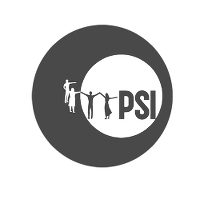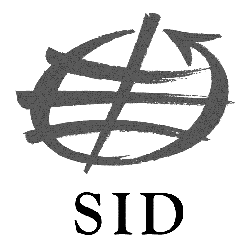By Antonia Wulff, Education International (EI)
SDG 4 on education and target 4.1 to ensure young people “complete free primary and secondary education” has so far been reflected mainly in the mobilization of teachers unions and civil society organizations against so-called ‘low-fee’ private schools – notably those run by Bridge International Academies and against the World Bank’s support for these profiteers in education. Yet, this is only one of the dimensions of privatization and commercialization that requires scrutiny within the realization of SDG 4.
SDG 4 could be summarized as more education of a better quality for all. The MDG on universal enrollment in primary education triggered a push to get as many children in school as soon as possible, leading in many cases to systems that could not keep up with the expansion, and to a diversification of provision. This, in combination with States’ failure to regulate and secure quality standards and decent working conditions for teachers, often led to education of poor quality.
Consequently, this time around, quality and equity are at the centre of the 2030 Agenda. The progress that is to be made at different levels of education is supported by specific commitments to safe learning environments and qualified teachers. Importantly, following the positive results of abolishing tuition fees to achieve MDG 2 on education, primary and secondary education is to be made free.
However, Member States stubbornly refused to learn the part of the lesson of MDG 2 that pointed to public provision and regulation of education as key to both equity and quality. Despite a significant civil society mobilization during the post-2015 negotiations, our efforts to secure an explicit commitment to public education failed, and so did efforts to protect public services from privatization and public-private partnerships (PPPs).
Making education pay
Indirectly, the 2030 Agenda encourages private sector participation in education: for instance, investment by the UK Department for International Development (DFID) in private, fee-paying profit-making education will be understood and treated as falling within the UK’s contribution to SDG implementation. At the same time, the SDGs in general and particularly in terms of means of implementation, represent a shift in the approach to financing where countries in sorting out their own financing are expected to open the door to new forms of private-sector engagement.
The mushrooming of private schools has been spearheaded by the emergence of so-called ’low-fee’ private schools – or, as they should be categorized: fee-charging, profit-making schools. A striking example of this trend is Bridge International Academies, which operates over 500 nursery and primary schools with over 100,000 pupils in Kenya, Uganda, Nigeria, Liberia and India. Their business model is based on the use of unqualified teachers who rigidly following scripted and standardized, tablet-based lesson plans, leaving no room for the pedagogical processes that characterize a quality education.
Last year, the Ugandan government shut down 63 Bridge schools due to unfulfilled legal and educational requirements, including the use of unqualified teachers, and poor sanitation. [fn]Statement by Permanent Secretary of Ugandan Ministry of Education on 9 November 2016 (http://bit.ly/2fEm54Z). [/fn]
Saving costs through the use of cheaper teachers and technology is not uncommon; what is shocking here is the investment and support of actors such as the World Bank, DFID, the British multinational publishing and education company Pearson, the Bill and Melinda Gates Foundation, and Mark Zuckerberg.
On one side of this coin are the governments who are keen to cut costs. These cost-cutting efforts can be observed across the globe, whether it is the freezing of salaries of public sector workers and the closing of public schools, the introduction of education voucher schemes, or the privatization of schools as well as education support services – such as food services being outsourced to private companies who replace school canteens and staff with giant microwave ovens and pre-prepared frozen foods.
The implications of these actions for the realization of the right to education vary. In Kenya, sending three children to a so-called low-cost Bridge school has been shown to amount to between 44 and 138 percent of the household income of a poor family, forcing families to choose which child goes to school, and frequently reproducing structures of poverty and inequality. [fn]Education International/Kenya National Union of Teachers (2016), p. 50. [/fn] While the outsourcing of provision may seem like a financially smart move in the short term, these measures undermine the equity and quality of national education systems.
On the other side of the coin is an evolving global education market, currently valued at US$ 4.3 trillion and expected to grow significantly in the coming years. [fn]Robertson/Komljenovic (2016). [/fn] This is partially driven by venture capital and private investment firms, some of whom invest in companies such as Bridge International Academies, for instance. But there are also local actors who have spotted a potentially lucrative domestic market; for instance, the Omega schools in Ghana charge approximately US$ 0.65 a day in tuition, which amounts to 41 percent of the national minimum wage, and excludes the indirect costs of education, such as uniforms, school meals, materials, and transport. [fn]Table prepared by P. Srivastava in 2015: http://bit.ly/2praAnx. [/fn]
Interestingly, 42 percent of the non-state actors engaged in the education of Syrian refugees are businesses and private foundations, and 76 percent of them have their headquarters in the global North. While none of these actors support fee-charging education, some of them are profit-driven in their motivations and approach refugee education as a market. [fn]Menashy/Zakharia (2017). [/fn] However, several of these private actors also frame their work as human-rights based, which raises interesting questions about the generalized use and misuse of a rights discourse.
Reducing education to test results
If there was one figure that came to shape the formulation of SDG 4, it was the 250 million children that UNESCO reported could neither read nor write after four years of schooling. [fn]UNESCO (2012), pp. 124-126. [/fn] A shocking figure, it questioned not only the cherished progress in education under the MDGs but also the whole point of education: what is the purpose of going to school if you do not learn anything?
While there were obvious structural reasons for this poor quality, as pointed out for example by feminists, who sought more attention to retention and completion of quality education, the subsequent push for ‘learning’ was not in fact constituency-based or grassroots-driven, but a direct consequence of private sector funding available to those advocating for a ‘learning goal’. This meant that a number of civil society organizations were funded to advocate for a goal along the lines of “all children are able to read and write by 2030.”
This is of course a hard ambition to shoot down, but learning outcomes are not synonymous with quality education, nor is measurement in itself a solution to a lack of learning. On the contrary, a narrow focus on outcomes in literacy and numeracy has been proven to reduce the scope and depth of education provided, which threatens the very purpose of education. Without entering into semantics, I would also argue that there is a difference between learning and education; while the former is an integral part of the latter, it is the latter that implies a system and a society.
The push for learning is consistent with national policies introduced across the globe, through which the development of education systems is increasingly driven by processes of standardization and ‘datafication’. These reforms build on a number of assumptions: firstly, the assumption that education systems currently are both expensive and ineffective. Secondly, the assumption that all processes of teaching and learning can be standardized, measured and turned into data. And thirdly, the assumption that the data can be used to measure the efforts and performance of students as well as teachers, and, importantly, of systems as a whole, subjecting them to simplified cost-benefit analyses.
Both standardization and accountability can be tools for ensuring equity and quality across systems, as many of us have also argued in relation to the implementation and monitoring of the 2030 Agenda. But the tools that are now being introduced are not designed to help hold governments to account for their investment or lack thereof in equitable, quality education systems.
On the contrary, the tools being put forward tend to be based on large-scale, standardized assessments, often designed and administered by edu-businesses. It is, for instance, Pearson, the largest education company and book publisher in the world, that is developing the frameworks for the OECD’s Programme for International Student Assessment (PISA), which means that they are working out how literacy, maths, science and ‘global competences’ are to be tested. The PISA test is taken by 15-year olds in more than 70 countries; the OECD is currently developing a PISA for Development, i.e. a similar assessment but for so-called developing countries.
Pearson, which describes itself as “the world’s learning company”, is a good example of a multinational company with business interests in assessments as well as in teaching and learning materials, online tools, and teacher training. [fn]See www.pearson.com. [/fn] This means that they have several and intricately interlinked interests in what PISA measures.
Meanwhile, data-driven and performance-based systems are also facilitating the creation of an education market amongst schools, where different schools are competing in the race for excellence (as narrowly defined by these systems). Results of standardized tests are used to rank schools as well as teachers, and are increasingly informing both budget allocations and teacher pay, all under the broader discourse of the right to choose the best education.
What, then, are the classroom implications of such data-driven and performance-based systems? By putting both teachers and students to the test, teachers are left with diminishing professional autonomy and freedom, and are being pressured into teaching to the test rather than catering to the needs of the students. Among the more extreme examples are schools that have simply asked some of their students to stay at home on test days. Curricula have also been shown to be unduly narrowed as a consequence of a dogmatic focus on specific testing regimes, leaving little time – or money – for arts, culture, or physical education. [fn]Westheimer (2015), p. 14. [/fn] The great paradox here is that this also marginalizes and deprioritizes the urgently needed education for sustainable development, human rights, and global citizenship.
The deficiency of current measures
These trends are reinforced by the global indicator framework for the SDGs. Member States explicitly favour outcome indicators – which, incidentally, favour rich countries as they have had a head start – and for the education goal, this of course translates into learning outcomes.
While the right to education lays down a number of standards to which Member States are obliged to adhere, several SDG targets refer to concepts within education for which there are no global standards. This despite the global indicator framework being based upon such standards. Target 4.1 – on completion of free quality primary and secondary education leading to relevant and effective learning outcomes – has, for example, a global indicator on proficiency in literacy and numeracy, which means that a standard will have to be developed for SDG 4 to be successfully realized.
This is symptomatic of the tendency to perceive problems through the narrow lens of the individual, ignoring structural concerns and the responsibilities of duty-bearers. The irony is that measuring proficiency at the global level makes little sense; a global metric cannot take contextual factors into account, making it difficult to interpret the results. Moreover, not being aligned to national policy and curricula, the metric cannot be used to evaluate or inform policy development, or support classroom interventions. What it is likely to do is pit countries and systems against each other, and push systems in a direction that may be far from a country’s particular needs and priorities.
The need for rights-based monitoring
SDG 4 was celebrated in the education community for adhering to the progressive realization of free education beyond primary, as laid out within the right to education. But this historic commitment to free education at the intergovernmental level has, thus far, only been matched by an increase in privately provided, fee-charging education, particularly targeting those who are least able to pay. Paradoxically, the current SDG architecture does not allow for any scrutiny of such developments. The indicators are neither rights-based, nor in accordance with the full scope of the targets, and Member States are anyway free to choose what they report on.
What should be monitored under the 2030 Agenda is the enjoyment of the right by rights-holders as well as the degree of compliance with human rights obligations of States. Instead, in the case of education, governments can report on enrollment figures and learning outcomes, without disclosing the provider of education, or costs to households. This also applies in the case of donor-supported private education. The impoverishment of communities and the furthering of inequality caused by UK-funded private fee-charging education overseas will not be spotted in any of the current monitoring mechanisms. This is particularly ironic given that the result of this ‘contribution’ is likely to directly undermine the implementation of the goals on gender equality (SDG 5), decent work (SDG 8) and inequality (SDG 10), to mention but a few.
At the same time, the mobilization against the mushrooming of private schools has to be accompanied by efforts to interrogate the social and economic structures and forces that have made these developments possible. There is no question that sustained fiscal austerity has an impact on the quality of public services, but we have also to recognize that there is a growing demand for private alternatives, characterized by a consumerist attitude to education. To many, progress equals the ability to choose – or in the case of education, the ability to put your children in private school.
But what the example of Bridge International Academies so clearly shows is that ‘choice’ is not equal but is by default reproducing the very patterns of inequality that it claims to defeat. When States abdicate their duty to ensure quality education for all, the de facto choice offered to different segments of society is an education where the quality tends to match social and economic status, effectively further cementing and reproducing inequality.
Antonia Wulff is a Coordinator at Education International (EI), the world federation of teachers’ unions.
Education International/Kenya National Union of Teachers (2016): Bridge vs. Reality: A study on Bridge International Academies’ for-profit schooling in Kenya. Nairobi.
https://download.ei-ie.org/Docs/WebDepot/Bridge%20vs%20Reality_GR%20Report.pdf
F. Menashy, F./Zakharia, Z. (2017): Investing in the crisis: Private participation in the education of Syrian Refugees. Brussels: Education International.
www.aft.org/sites/default/files/ei_research_syria_april2017.pdf
Robertson, S. L./Komljenovic, J. (2016): Unbundling the University and Making Higher Education Markets. In: A. Verger/C. Lubienski/G. Steiner-Khamsi (ed.) (2016): World Yearbook of Education 2016: The Global Education Industry. New York/Abingdon: Routledge, pp. 211-227.
UNESCO (2012): EFA Global Monitoring Report. Youth and skills: Putting education to work. Paris.
http://unesdoc.unesco.org/images/0021/002180/218003e.pdf
Westheimer, J. (2015): What Kind of Citizen? Educating our children for the common good. New York: Teachers College Press.








